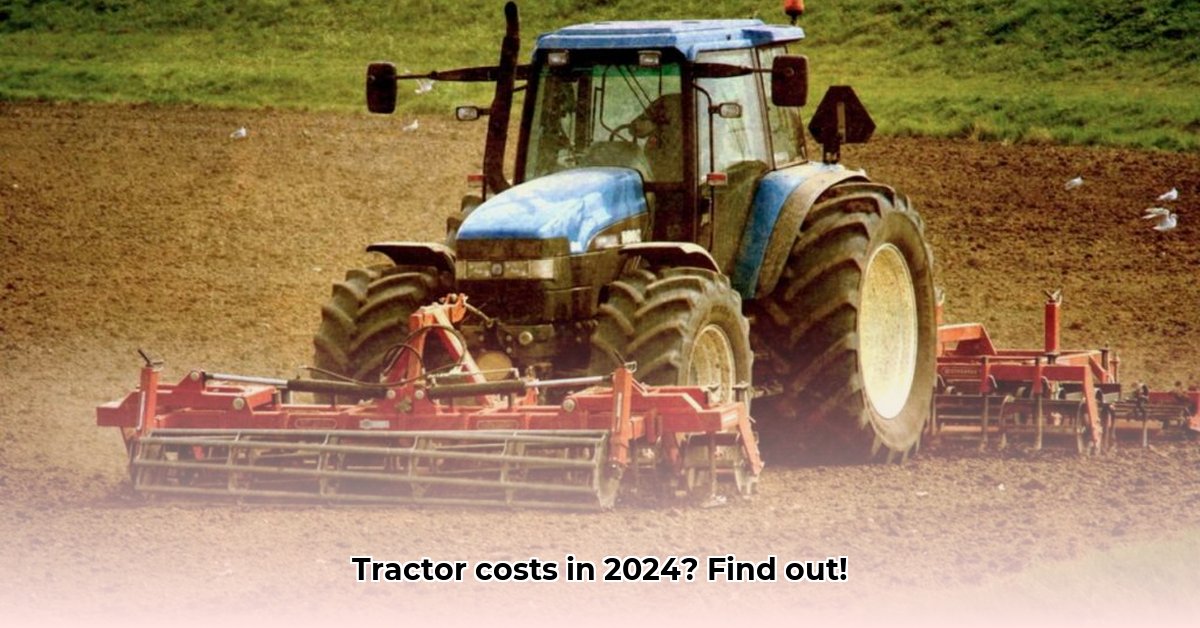
Buying a tractor is a significant investment for any farm, impacting profitability and operational efficiency. This guide provides a comprehensive overview of tractor costs in 2024, focusing on sustainable agricultural practices. We'll cover factors influencing price, purchasing options, maintenance, and long-term considerations. For more detailed pricing information, see this helpful resource on tractor costs.
Factors Affecting Tractor Costs
Several factors significantly impact a tractor's price. Understanding these will help you make an informed purchase decision.
Horsepower (HP) and Size
Higher horsepower generally translates to a higher price. Larger tractors are more powerful, handling more extensive fields and heavier tasks, but the increased capability comes at a cost. Consider your farm's size and workload; purchasing a tractor with excessive horsepower is inefficient and expensive.
Age and Condition
Brand-new tractors are the costliest, but they come with warranties and cutting-edge technology. Used tractors offer significant upfront cost savings but might require more maintenance and repairs. The age and condition of a used tractor directly influence its price and potential long-term expenses.
Features and Technology
Modern tractors often incorporate advanced features like GPS guidance and precision farming tools. While these enhancements boost the initial cost, they increase efficiency and yield, leading to potential long-term savings. Evaluate the value of advanced features relative to your operational needs and budget.
Attachments and Implements
Tractor attachments like loaders, mowers, and plows add to the total cost. Only purchase the attachments essential for your farming operations. Avoid unnecessary expenditures.
New vs. Used Tractors: A Cost-Benefit Analysis
The decision to buy new or used involves weighing immediate costs against long-term expenses and risk.
| Feature | New Tractor | Used Tractor |
|---|---|---|
| Upfront Cost | High | Low |
| Maintenance | Lower (initially) | Higher |
| Technology | Latest | Older |
| Warranty | Usually Included | Rarely Included |
| Resale Value | Generally Higher | Lower |
A new tractor provides peace of mind with a warranty and the latest technology. However, a well-maintained used tractor can be a more affordable option, especially if you have the mechanical skills to handle some repairs. A thorough inspection is paramount when buying used.
Financing Your Tractor Purchase
Financing options are crucial for most farmers. Explore these avenues:
- Bank Loans: Traditional loans from banks or credit unions offer structured repayment plans. Interest rates and terms vary based on credit history.
- Government Subsidies: Many governments offer subsidies and grants for sustainable agriculture practices. Explore available programs to potentially reduce your upfront costs.
- Leasing: Leasing allows you to use a tractor for a specified period without ownership, making monthly payments. Consider this option if you need a tractor for a set time frame.
Carefully compare terms and interest rates before committing to any financing option.
Choosing the Right Tractor for Your Needs
Selecting the right tractor involves considering your farm's specific requirements.
- Farm Size: Match tractor size to your acreage and workload; avoid oversizing.
- Soil Type: The type of soil influences the power and features you'll need.
- Intended Use: The tasks you intend to perform will determine the necessary attachments and horsepower.
- Future Expansion: Plan for your farm's future growth and choose a tractor that can adapt to your changing needs.
Tractor Maintenance and Operation
Regular maintenance is key to maximizing your tractor's lifespan and minimizing fuel consumption.
- Preventative Maintenance: Schedule regular oil changes, filter replacements, and inspections.
- Fuel Efficiency: Operate the tractor efficiently, minimizing idling and harsh acceleration. Consider fuel-efficient models and alternative fuels.
- Operator Training: Proper training for tractor operation reduces wear and tear, increasing efficiency and longevity.
Long-Term Cost Analysis
When assessing “how much for a tractor?”, consider the total cost of ownership. This includes not only the initial purchase price but also the ongoing costs of:
- Fuel
- Maintenance
- Repairs
- Potential future replacements
A detailed long-term cost analysis helps in making a sound financial decision.
Regulatory Considerations
Stay informed on evolving regulations impacting agricultural machinery. Emission standards and other regulations can affect operating costs and future compliance needs.
Conclusion: Making a Sustainable and Cost-Effective Choice
Selecting a tractor requires careful planning and research. By understanding the factors influencing cost, evaluating purchasing options, and prioritizing maintenance, you can make a sustainable and cost-effective investment that benefits your farm for years to come. Remember to consider both the short-term and long-term financial implications.